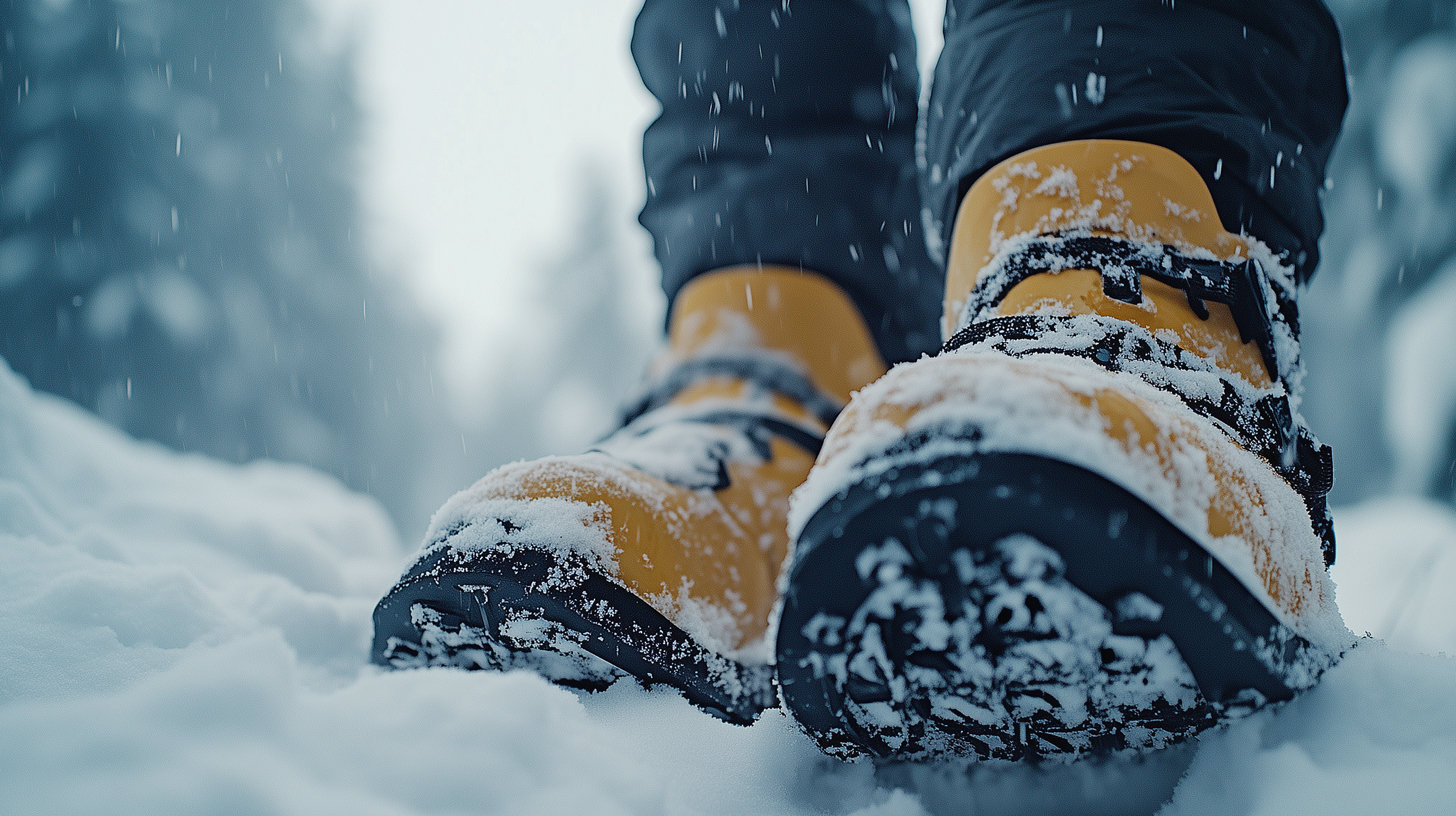Venturing into the world of snowshoeing can be an exhilarating experience, but it’s crucial to approach it with caution and preparation. Understanding the basics is essential for any beginner snowshoer looking to explore winter hiking safely.
First and foremost, selecting the right snowshoe equipment is vital. Unlike regular hiking boots, snowshoes are designed to distribute your weight over a larger area, preventing you from sinking into the snow. However, not all snowshoes are created equal. It’s important to choose a pair that matches your weight and intended terrain—whether you’re sticking to flat trails or tackling more rugged landscapes.
Equipping yourself with proper clothing is equally important. Winter conditions can be unpredictable; layering appropriately will help regulate your body temperature while keeping you dry. Remember that hypothermia is a real risk during winter hikes if you’re not adequately prepared.
Additionally, understanding trail etiquette and safety protocols cannot be overstressed. Always check weather forecasts before heading out and let someone know your planned route and expected return time. Carrying essentials like a map, compass, or GPS device will ensure you stay on course even in low visibility conditions.
While snowshoeing offers a unique opportunity to enjoy the serene beauty of winter landscapes, approaching it without due diligence can lead to unnecessary risks. Embrace this activity with respect for nature’s challenges and ensure each step you take is grounded in preparedness and awareness.
Essential Gear for Safe and Successful Snowshoeing Adventures
Embarking on a snowshoeing adventure can be an exhilarating way to explore winter landscapes, but it’s crucial to approach these excursions with the right gear and preparation. Choosing the appropriate snowshoe gear is not just about comfort—it’s about safety. For beginners, selecting the right snowshoes is vital; they should match your weight and the type of terrain you plan to tackle. Ill-fitting or inappropriate snowshoes can lead to discomfort or even accidents in challenging conditions.
Winter clothing tips are equally important when planning your trip. Layering is key: start with moisture-wicking base layers, add insulating mid-layers, and finish with a waterproof outer layer to protect against wind and wetness. Neglecting proper clothing can result in exposure-related injuries such as frostbite or hypothermia.
Essential snowshoe equipment goes beyond just footwear and apparel. Always carry a map, compass, or GPS device, as winter trails can be disorienting under heavy snowfall. Trekking poles provide stability on uneven surfaces and help conserve energy during long treks.
Equipping yourself properly ensures that your snowshoeing adventure remains safe and enjoyable rather than turning into an unexpected ordeal. Remember, preparation is your best defense against the unpredictable nature of winter environments.
Choosing the Right Trail: How to Find Beginner-Friendly Snowshoe Routes
When venturing into the world of snowshoeing, selecting the right trail is crucial for a safe and enjoyable experience. As a beginner, it’s essential to seek out beginner snowshoe trails that match your skill level and provide a secure environment to learn and explore. Not all winter trails are created equal, and understanding trail difficulty levels can make the difference between an exhilarating adventure and an overwhelming ordeal.
Begin by researching well-known safe winter trails in your area or destination. Look for routes specifically marked as beginner-friendly, which typically feature gentle terrain with minimal elevation changes. These trails often have clear signage and are maintained regularly to ensure safety.
It’s important to remember that conditions can change rapidly in winter environments. Even on easy trails, weather conditions such as snowfall or icy patches can increase difficulty levels unexpectedly. Always check recent trail reports or contact local ranger stations for updates before heading out.
Equipping yourself with proper gear is another critical factor in ensuring safety on the trails. Make sure you have suitable snowshoes designed for beginners, along with appropriate clothing layers to keep warm without overheating.
By carefully choosing your path and preparing adequately, you can enjoy the serene beauty of winter landscapes while building confidence in your snowshoeing abilities. Remember, caution is key—prioritize safety over ambition when selecting your next snowy adventure.
Avoiding Common Mistakes: Tips to Stay Safe on the Trails
Venturing into the serene winter wilderness can be an exhilarating experience, but it comes with its own set of challenges and potential hazards. To ensure a safe and enjoyable journey, it’s crucial to be aware of common beginner mistakes and adhere to essential safety tips for snowshoers.
First and foremost, always check the weather conditions before heading out. Snowshoers often underestimate how quickly weather can change in mountainous regions, which is one of the most frequent missteps among beginners. An unexpected storm can turn a peaceful hike into a perilous situation.
Equally important is understanding your route thoroughly. Many novice snowshoers fail to research their trails adequately, leading to disorientation or getting lost. Always carry a map or GPS device, and inform someone about your planned route and expected return time.
Layering appropriately cannot be overstated when it comes to winter hiking safety. Beginners often make the mistake of wearing insufficient clothing, leading to hypothermia risks. Dress in layers that you can easily add or remove based on activity level and temperature changes.
Lastly, never underestimate the importance of proper gear. Inadequate footwear or equipment can lead not only to discomfort but also serious injuries like frostbite or sprains from slipping on ice-covered paths.
By avoiding these common pitfalls and following these safety tips for snowshoers, you can ensure that your adventure remains both thrilling and secure as you explore the winter wonderland responsibly.
Navigating Weather Challenges: How to Prepare for Changing Conditions
When venturing into the great outdoors during winter, especially for activities like snowshoeing, it’s crucial to be well-prepared for unpredictable weather challenges. The serene beauty of a snow-covered trail can quickly turn treacherous if you’re not adequately equipped. Winter weather preparation is not just about keeping warm; it’s about survival and ensuring your safety in potentially harsh conditions.
One of the primary weather challenges in snowshoeing is rapidly changing conditions. A clear sky can swiftly give way to a blizzard, reducing visibility and making navigation difficult. It’s essential to check the weather forecast before heading out and continue monitoring it throughout your journey. Carrying a reliable GPS device or map is advisable as trails can become obscured by heavy snowfall.
Adapting to conditions on the trail means having the right gear at your disposal. Layered clothing that wicks moisture away from your body while providing insulation is vital. Waterproof boots and gaiters will keep your feet dry, while thermal gloves and hats protect extremities from frostbite. Remember, hypothermia is a real threat when temperatures drop unexpectedly.
In conclusion, taking these precautions seriously can make all the difference between an enjoyable adventure and a dangerous ordeal. Always prioritize safety over ambition when navigating winter trails—nature’s beauty should be respected but never underestimated.
The Importance of Pace and Hydration in Snowshoeing Activities
When embarking on snowshoeing adventures, it’s crucial to understand the importance of sustainable pacing and consistent hydration. While the serene beauty of winter trails can be mesmerizing, they also demand respect and careful preparation. Sustainable pacing in snowshoeing is not just about maintaining a comfortable speed; it’s about managing your energy wisely to ensure you can complete your journey safely. Overexertion in cold conditions can quickly lead to fatigue or even hypothermia, making it essential to listen to your body and adjust your pace accordingly.
Equally important is staying hydrated in cold weather. It’s easy to forget the need for hydration when you’re surrounded by snow and chilly air, but dehydration can sneak up on you faster than expected. Cold weather often suppresses thirst cues, leading many snowshoers to underestimate their fluid needs. Carrying an insulated water bottle and taking regular sips—even if you’re not thirsty—can help maintain your energy levels and overall well-being on the trail.
Remember that energy management on trails isn’t just about food intake or rest breaks; it’s a holistic approach that includes proper pacing and hydration strategies. By respecting these elements, you’ll not only enhance your performance but also safeguard against potential risks associated with winter hiking activities. Always prioritize safety over speed and ensure you’re adequately prepared for the unique demands of snowshoeing in cold environments.
Caution and Enjoy Your First Steps into Snowy Landscapes with Confidence
Winter’s allure is undeniable, with its pristine snowy landscapes inviting adventurers to explore their frosty beauty. However, as you take your first steps into these wintry wonderlands, it’s essential to proceed with caution and preparedness. Snow-covered terrains can be deceptive; what appears to be a smooth surface might conceal hidden obstacles like rocks or icy patches that could lead to slips and falls.
Before embarking on your snowy adventure, ensure you’re equipped with the right gear. Invest in quality boots that provide both warmth and traction, and consider using trekking poles for added stability. Dress in layers to protect against the cold while allowing flexibility as you warm up during physical activity.
It’s also crucial to stay informed about the weather conditions and potential avalanche risks if you’re venturing into mountainous areas. Always let someone know your planned route and expected return time. These precautions can make all the difference in ensuring a safe experience.
Remember, while the snow offers a magical playground for exploration, respecting its potential dangers will allow you to enjoy its beauty confidently and safely.





